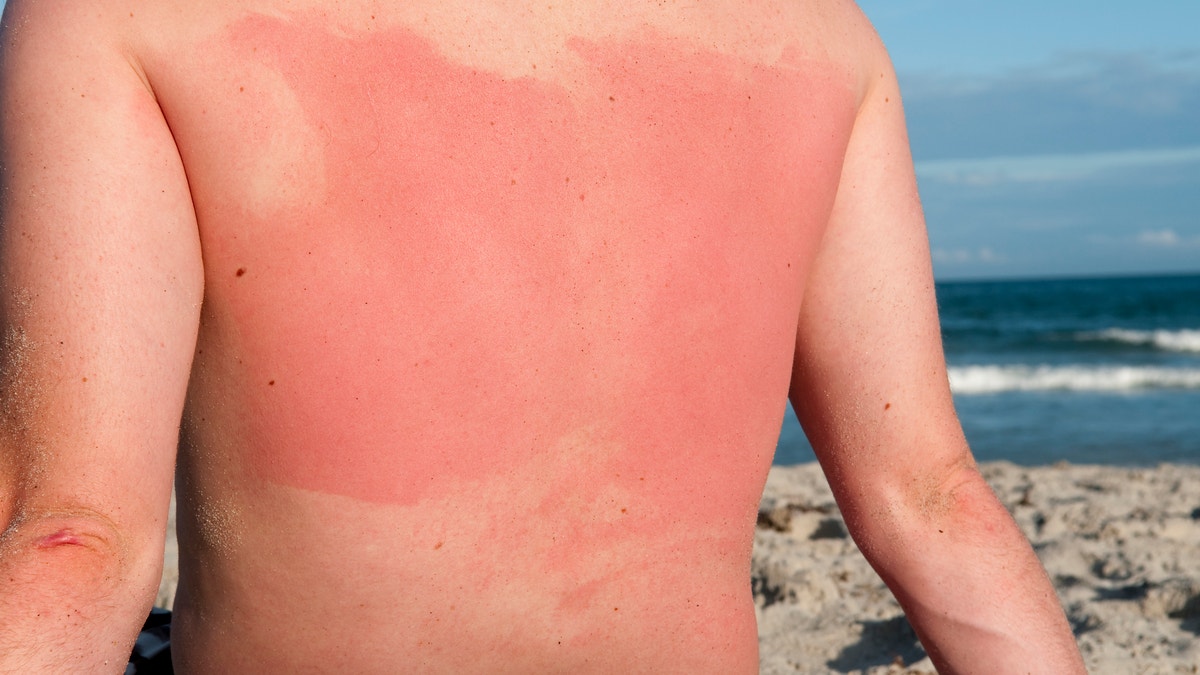
"A man with sunburn on the beach, the skin burnt where lotion didn't reach" (iStock)
Despite an abundance of advice to use sunblock, sometimes sunburn happens. One expert, Susan Chon, associate professor of dermatology at the University of Texas MD Anderson Cancer Center in Houston, explains what goes on in the skin when it burns and what to look for in the medicine cabinet, and the kitchen, for relief.
Risk Factors
People’s risk for sunburn varies, depending on where you fall on the Fitzpatrick Skin Type Scale, Dr. Chon says. “If you have red hair, blue eyes and freckles, you are probably a skin type 1 and will almost always burn and almost never tan,” she says. People with darker skin, and more pigment, may be closer to the other end of the scale, type 6, and will likely never burn. Still, Dr. Chon says she has met fair-skinned ranchers in Texas who are out in the sun all day and don’t burn or show signs of precancerous cells. “They just have good genes,” she says.
When people get too much sun, their skin is damaged by overexposure to harmful ultraviolet rays. The skin releases cells that signal the blood vessels to dilate. That leads to redness, pain and swelling, and a feeling of tightness, of the skin. Moisture will be drawn from the body.
Some people’s bodies eventually produce more melanin, a naturally occurring pigment, to tan the skin in an attempt to prevent UV rays from causing further damage. “So if you’ve gotten darker during a day at the beach, you may have already suffered a burn,” Dr. Chon says.
While many people associate the pinkness with a healthy glow, Dr. Chon cautions that a glow is quite the opposite. “Sunburn is damage, and the long-term effects can be seen later in life with prematurely aging skin, wrinkles and even cancer,” she says.